
Ballet Folklórico Mexica de CSULB performing one of their traditional cultural dances. (Natalia Chairez for CALÓ News)
The Museum of Latin American Art (MOLAA) in Long Beach hosted its annual Día de los Muertos Festival on Sunday.
This year’s theme was “Journey of our Ancestors” and highlighted the symbol of the Monarch butterfly, symbolizing the belief held by Indigenous communities that these butterflies embody the souls of ancestors returning to visit.
This theme was made to incorporate several exhibitions present at the museum such as “Vermelho Como a Brasa” by Portuguese artist Andrey Guaianá Zignnatto.
Solimar Salas, Vice President of Content, Innovation, and Outreach at MOLAA, noted that the understanding behind the monarch’s symbolism is one that is universal to everyone, resonating with them on different stages of their healing journeys.
“It’s that representation of transition, migration, and movement,” says Salas. “I think it's just that change in who we are, where we are, but the constant memory of where we've been, where we're going to, and how that sort of ties all of these storylines together.”

The front stage of the performer’s stage featuring host and DJ Caveman introducing Ballet Folklórico Almitas Mexicanas. (Natalia Chairez for CALÓ News)
The festival featured various vendors selling custom art pieces, candles, Latin American merchandise, food trucks, live music, performances, and a Calavera competition.
Since its early beginnings in 2009, MOLAA’s Día de los Muertos festival has grown from an idea by the museum’s educational team into an event that integrates Latin American cultural traditions with the fine arts.
With the museum being the first and only museum accredited by the American Alliance of Museums exclusively for Latin American art, the museum has since strived to incorporate the themes of several exhibitions and themes portrayed by their artists with the emotional symbolism of the annual cultural celebration.
Dr. Alison Heney, MOLA’s vice president of Learning and Public Programs, says the festival’s focus on fine arts distinguishes it from other Día de los Muertos celebrations in Los Angeles.

Inside the vendors room filled with guests and stands featuring different Latin-American themed merchandise for sale. (Natalia Chairez for CALÓ News)
“Our festivals have that lens of fine arts and the idea of art and art-making,” Heney says. “They come through with the idea that art can be the advocate and the thing that speaks between us.”
Today, the festival’s approach is making the celebration universal to everyone rather than solely Latinos mourning the loss of their loved ones, but for even non-Latinos who want to learn and be a part of the celebration, especially after the COVID-19 pandemic.
The event, sponsored by the Port of Long Beach and Hyundai, welcomed vendors and various community partners in collaboration with MOLAA.
Before the start of the first live performance, the event had live music mixed by DJ Caveman playing a variety of genres from Oldies, Funk, Old school, Freestyle but also Cumbias and Reggaeton, creating an environment for all generations of audience members to enjoy.
The first live performance was by Ballet Folklórico Almitas Mexicanas, a cultural dance group established in the South Bay region of Southern California. Crowds had already picked up quickly and cheered loudly for the young performers.
Each dancer dressed head to toe in traditional flowy and vibrant-colored hues woven into Folklórico dresses and detailed Calavera makeup, they performed traditional Folklórico dances from Jalisco and Sinaloa alongside their instructors, making for an intimate and heartwarming performance for audience members.
“The enthusiasm of the visitors and audience is always very contagious,” says Salas. “We're always really aware of carrying through that narrative to make sure that it's as representative as we can make it. And every year there's something new we discover.”
This performance transitioned into the next live performance by Ballet Folklórico Mexica de CSULB, a cultural dance group formed at California State University, Long Beach, performing traditional Folklórico dances from regions in Mexico such as Nayarit and Veracruz.

MOLAA’s community-made ofrenda at the festival. (Natalia Chairez for CALÓ News)
The group’s performance featured a variety of regional dances and a machetes dance performed by the sole male performer in the group, engaging the crowd as they cheered loudly.
Several contestants were then judged and nominated in the festival’s annual Catrina and Catrin look competition where the nominees came ready to compete for 1st place in which the winner would take home $500.
Each contestant came uniquely embezzled, dressed, and painted, some modernized yet traditional with their unique styles and takes on the Catrina and Catrin look.
Dr. Heney discussed the impact of what MOLAA hopes guests take away from the Mexican tradition at the festival and how it has extended to non-Latinos within the MOLAA community.

Food vendor area and guests walking around into the performer's area. (Natalia Chairez for CALÓ News)
Reflecting on the importance of MOLAA's inclusive approach, Heney shared the story of a Japanese American staff member who last year joined the celebration to honor his grandmother.
“Sometimes people celebrate it because they want to have cultural ties to their communities,” Heney says. “We think that the biggest takeaway is to remember that it is as diverse as the people that celebrate it.”
Raices Peruanas, a Southern California cultural dance group formed by sisters, Doris and Jeanine Espejo, performed native Peruvian dances greatly contrasting the traditional Mexican folkorico dances and creating room for different perspectives of the celebration.
Concluding the festival was a performance by Ballet Folklórico La Nueva Antequera, a Oaxacan-born dance group founded in 1999. They performed traditional Oaxacan dances with the goal of embracing and keeping the traditions and vision of Oaxaca alive.
Salas believes that annual celebrations like MOLAA’s, especially in a city as diverse as Long Beach, are the reason Dia de los Muertos will forever maintain longevity.
“I don't think there's a chance that this will ever fade away because it's part of that multi-generational tradition experience and as our community keeps growing and diversifying,” Salas says. “It's not only the Latinos that are asking for it, it’s also everybody else.”
Though Los Angeles is no stranger to the celebration of its melting pot of cultures and traditions, the impact of the MOLAA event transforms the space of a museum into one of an embrace of Latin American roots that is multigenerational and universal to all.
For many, the festival was more than a cultural event; it was a journey that connected them to their roots and, perhaps, to a piece of their own story.


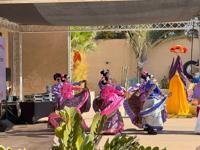
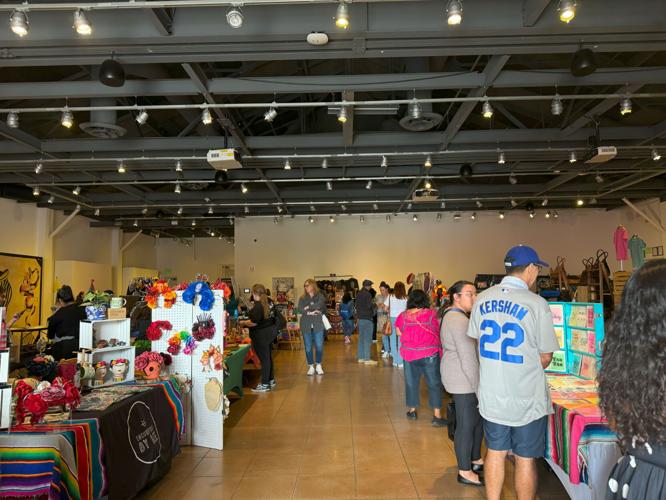
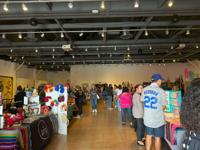
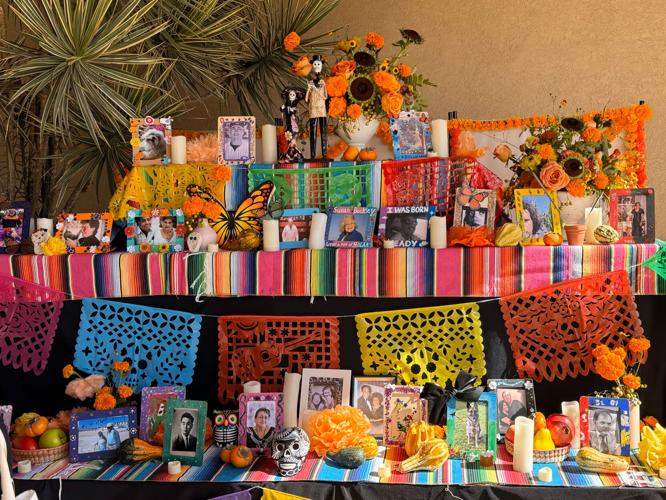
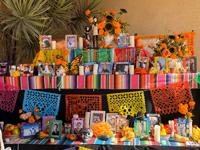
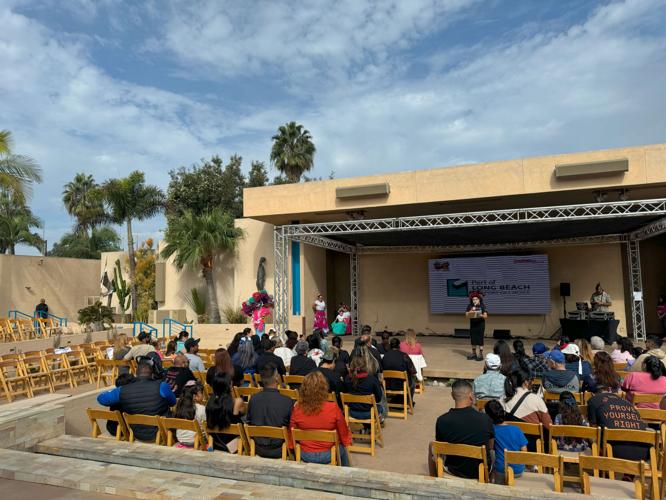
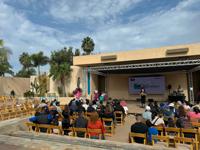
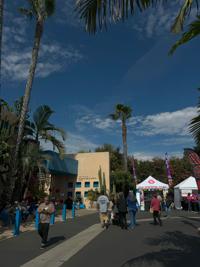



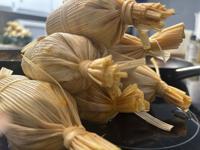

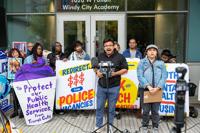

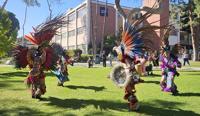
(0) comments
Welcome to the discussion.
Log In
Keep it Clean. Please avoid obscene, vulgar, lewd, racist or sexually-oriented language.
PLEASE TURN OFF YOUR CAPS LOCK.
Don't Threaten. Threats of harming another person will not be tolerated.
Be Truthful. Don't knowingly lie about anyone or anything.
Be Nice. No racism, sexism or any sort of -ism that is degrading to another person.
Be Proactive. Use the 'Report' link on each comment to let us know of abusive posts.
Share with Us. We'd love to hear eyewitness accounts, the history behind an article.